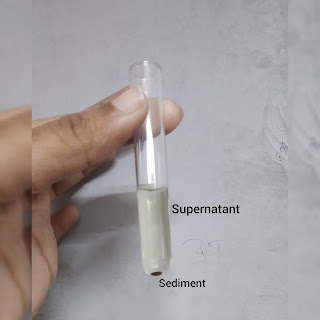Case based OSCE along with Bloom's learning levels achieved
Case based OSCE along with Bloom's learning levels achieved
Objective Structured Clinical Exam
This is an online e log book to discuss our patient de-identified health data shared after taking his / her / guardians signed informed consent. Here we discuss our individual patients problems through series of inputs from available global online community of experts with an aim to solve those patients clinical problem with collective current best evident based input.
This E blog also reflects my patient centered online learning portfolio and your valuable inputs on the comment box is welcome.
I have been given this case to solve in an attempt to understand the topic of " patient clinical data analysis" to develop my competency in reading and comprehending clinical data including history, clinical findings, investigations and come up with diagnosis and treatment plan.
I was asked to go to the biochemistry laboratory and learn about the process by which UPCR is calculated.
24 hr urine protein creatinine ratio
MEASURING AND MIXING URINE BEFORE TAKING TEST SAMPLE FOR 24HR UPCR
https://youtu.be/9fVE5WLrIu8?si=FA3njXRTS7WKz2I8
Thymol crystals one pinch used as preservative are added to urine can before giving
It has pungent smell
24 hr urine sample collected after discarding the first sample at 6:00 am and urine is collected from next sample till next day morning first sample
Urine samples as given by attenders
Measuring cylinder 1 lt
Measuring urine volume using measuring cylinder
Urine measured=2300 ml
Mixing of urine
https://youtube.com/shorts/2TvGq1E43Lo?si=LMW8Blgc9Wga5a99
After mixing both urine samples 3 ml test sample is taken and centrifuge slowely to saparate sediment and supernatant
Took 3 test tubes labeled as test, standard and blank,
Add 2ml of sulpho salicylic acid to each test tube
Sulpho salicylic acid
Add 0.5 ml urine sample to test tube marked T
Add 0.5 ml standard protein to standard tube marked S
Standard proteinNothing should be added to blank tube
Wait for 10 minutes
I could appreciate Cloudy appearance in test sample test tube
Comparison between blank and test
I kept blank in calorimeter and made zero cal
Blank
Reading 0.00 cal
Following this standard solution is placed in calorimeter
Reading 0.44 cal
Following this the test sample is placed
Reading 0.22 cal
All readings are notes
Calculating protein values
Calculating spot urine protein
=calorimeter test value x concentration of standard solution/ calorimeter standard value
[Concentration of standard solution =60mg]
=0.22 x 60/0.44
= 30 mg/dl
Spot urine protein = 30mg/dl
Calculating 24 hr protein
= spot protein x 24 hr urine volume/100
=30 x 2300/100
= 690mg/dl
24 hr urine protein is 690mg/dl
Calculating urinary creatinine
BS 390 auto analyser

















Comments
Post a Comment